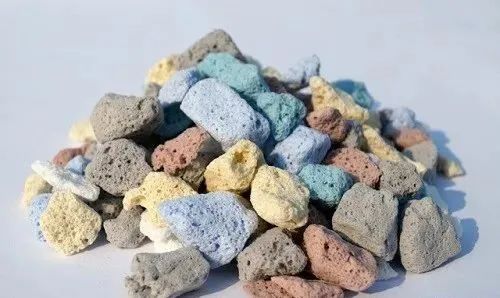Fly Ash Vitrification Products – Glass Pumice
Glass pumice is an artificial porous lightweight foaming material produced by crushing, burning and foaming waste glass. Glass pumice is not only a soil-reducing material that is very mild to the earth, but also has excellent water permeability and water retention, and also has the function of fire resistance. In various projects, the specific gravity and water absorption of pumice can be freely adjusted according to different uses and needs, so as to play and make full use of its better performance in greening, heat insulation, gardening, water purification, civil engineering and other projects. It is a high-value-added commodity that can be used for multiple purposes and is indispensable for building a resource recycling society.

According to its own characteristics, glass pumice can be applied to underground rainwater storage, water purification of rivers, lakes, reservoirs, fish ponds, etc., new materials such as thermal insulation and fireproof building materials, solar power generation materials, civil construction such as elevated roads, bridges, deserts, barren mountains, etc. Soil improvement such as wasteland, drought and flood land, indoor gardening, urban gardening, street greening and other fields.
The fly ash vitrification technology uses fuel or electricity to heat the fly ash to a high temperature of more than 1400 ° C in the furnace, so that the organic pollutants such as dioxins are decomposed at high temperature, and the slag is rapidly cooled to form a glass solid body. The dense network structure and stable chemical valence state of the glass body ensure that the cured glass body has good chemical stability. The melting and solidification technology can not only control the pollution, but also the mass of the ash after melting is dense, and the volume reduction effect is very significant. In addition, the slag can be made into building materials or used as products or semi-finished products in the production industries such as ceramics, glass, foam materials, permeable bricks, mineral wool, glass pumice, etc., to realize the high value-added resource utilization of fly ash.
Therefore, the use of fly ash vitrification products for the production of glass pumice, on the basis of fully realizing the resource utilization of fly ash, the high-value utilization of fly ash is realized through the productization path of glass pumice, and in the process of turning waste into treasure At the same time, creating great economic value is also an active exploration and beneficial practice to effectively implement the goal of a beautiful China in 2035, and will surely lead the development trend of high-value utilization of fly ash.
Using fly ash and vitrified products of tempering material to produce glass pumice, firstly, a certain proportion of each raw material is added to the mixer through the silo for mixing, and the mixed material is evenly added to the kiln charge layer through the distributor. In the upper part, the material layer melts and flows from top to bottom in the vertical direction. The molten glass is homogenized and clarified to become a qualified melt. The qualified melt flows out through the discharge port and enters the water quenching pool to form water-quenched glass. material. After that, the water-quenched glass frit is ground and sintered and expanded with additives at high temperature to generate bubbles. After the temperature change, the product is slowly hardened and formed. The mixing ratio and temperature of the additives can be adjusted to control the foaming ratio, pore size and porosity of the product. After heating, softening, foaming molding, cooling and other processes in the sintering furnace, it is packaged and stored after being broken.
The raw materials for the production of glass pumice in this process are mainly fly ash and tempered materials. There are no special requirements for water-quenched glass materials. Various shapes, colors, impurities, etc. can be used, and no pre-processing such as sorting and cleaning is required. There is no waste water and solid waste discharged during the production process. The production fuels are mainly electricity and natural gas. The production process is closed automatic production, and only a small amount of polluted gas is discharged. The powder ground from the fly ash vitrified water quenching material is transported to the mixing mixer in a vacuum environment, which reduces the incidence of static electricity. , except for a small amount of dust generated by machine vibration, no other dust is discharged.
Glass pumice is an environmentally friendly new material with superior performance, and at the same time can efficiently consume waste glass, with obvious economic and social benefits. The development and application of glass pumice in my country is still in the initial stage, and the development space is very broad. Under the conditions of relatively mature technology and technology, if glass pumice is gradually accepted in various fields of the market, a new industrial chain will be formed.
